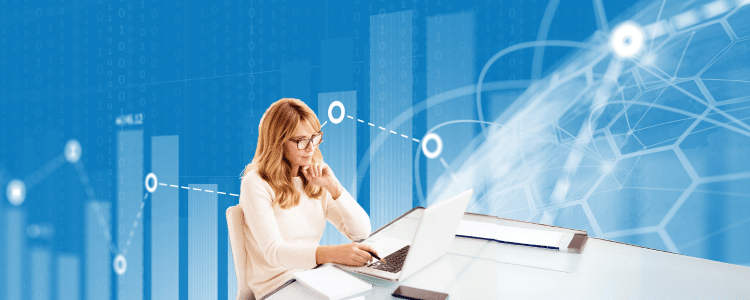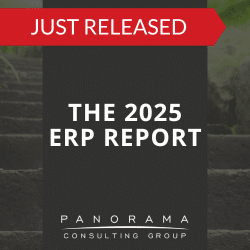CEOs and high-level executives face the pressing challenge of aligning their organizations’ technological capabilities with their organizations’ long-term goals. Without a well-defined IT modernization strategy, new technology often leaves executives with more problems than solutions.
Today, we’re delving into the components of a successful IT modernization journey so you can guide your team to the right solutions.
The IT Modernization Process: More Than Just Technology
A holistic IT modernization process addresses four key areas:
- People: The success of any IT modernization effort relies on the skills and adaptability of your workforce. We recommend developing a change management strategy to motivate and empower employees to embrace change. This human-centric approach mitigates resistance and enables employees to leverage modern tools effectively.
- Processes: Modernizing your IT environment also means re-evaluating business processes. Legacy workflows often become inefficient bottlenecks in a digital-first world. Streamlining processes through process improvement workshops can fix inefficiencies and standardize inconsistencies.
- Technology: Whether you implement ERP software, artificial intelligence (AI), or advanced data analytics, these solutions should enable your business goals rather than dictate them. Defining your business goals and then selecting technology that aligns with these goals is crucial.
- Data: Modern organizations thrive on data-driven decision-making. A data strategy that emphasizes integration, quality, and accessibility is fundamental to IT modernization. For example, when implementing a supply chain management system, it’s important to develop a data strategy defining what type of data is needed to optimize functions such as demand forecasting and real-time inventory monitoring. Then, you can focus on ensuring this data is both accessible and accurate.
2025 Clash of the Titans
SAP, Oracle, Microsoft, and Infor each have a variety of systems that can support data-driven decision-making. We surveyed customers of these four vendors to find out what their selection and implementation process was like.
Best Practices for IT Modernization
Balancing Innovation with Stability
Our ERP implementation consultants often recommend best practices such as:
- Pilot Programs: Before rolling out new technologies across the organization, consider implementing pilot programs. These controlled, small-scale implementations allow you to test the effectiveness and scalability of new solutions in a low-risk environment. Feedback from these pilots can guide adjustments and help refine the overall modernization strategy.
- Incremental Modernization: Rather than attempting a complete overhaul, consider an incremental approach. This can mitigate risks and reduce the impact on daily operations. We recommend prioritizing modernization efforts based on factors such as business impact, cost, and ease of implementation.
- Legacy System Integration: Completely replacing legacy systems is often impractical due to cost, complexity, or business continuity concerns. Instead, consider integrating certain legacy systems with modern solutions. This can be achieved through APIs, microservices, or middleware that extends the functionality of existing systems while enabling new capabilities.
Engaging Stakeholders and Driving Change
Consider best practices such as:
- Executive Sponsorship: Visible and active support from top executives is critical in driving IT modernization initiatives. This sponsorship not only helps you secure the necessary resources but also signals to the entire organization that modernization is a strategic priority.
- Change Management: Resistance to change is one of the most significant barriers to successful IT modernization. Implementing an organizational change management plan can help address this challenge. This plan should include a communication strategy, training program, organizational assessments, and more.
- Cross-Functional Collaboration: IT modernization is not just an IT department initiative; it requires collaboration across various functions, including operations, finance, and customer service. For example, a manufacturing firm evaluating ERP systems should consider a variety of perspectives to ensure the selected system addresses diverse business needs, such as production scheduling accuracy, real-time inventory tracking, and effective cost management.
Leveraging Cloud and Emerging Technologies
Here are some innovations to consider:
- Cloud Adoption: Migrating to the cloud is a cornerstone of many IT modernization efforts. Cloud solutions offer flexibility, cost-efficiency, and the ability to scale resources on demand. However, cloud adoption should be approached strategically, with a clear understanding of which workloads are best suited for cloud environments and how to manage data security and compliance in the cloud.
- Artificial Intelligence and Automation: AI and automation can streamline business processes, reduce manual errors, and provide valuable insights. From chatbots that enhance customer service to machine learning algorithms that predict market trends, the possibilities are vast. The key is to identify specific use cases where AI can drive significant value and integrate these solutions into your broader IT strategy.
- Data-Driven Decision-Making: Modern IT infrastructures should not only collect and store vast amounts of data but also transform this data into actionable insights. Investing in advanced analytics and business intelligence tools can help your organization predict demand, optimize supply chains, and more.
Addressing Security and Compliance Challenges
This means focusing on the following best practices:
- Security by Design: Incorporate security considerations into every aspect of the IT modernization process, from the initial planning stages to ongoing management. This approach, known as “security by design,” ensures that new systems and technologies are inherently secure and resilient against threats.
- Regular Audits and Monitoring: Continuous monitoring and regular audits are critical for identifying vulnerabilities and ensuring compliance with industry regulations. Implementing automated monitoring tools can help detect anomalies and potential security incidents in real-time, allowing for swift action to mitigate risks.
- Data Privacy and Compliance: As data regulations become more stringent, compliance should be a top priority. Ensure that your modernization strategy includes robust data governance policies and that all data handling practices adhere to applicable legal requirements.
Measuring Success and Continuous Improvement
Our enterprise software consultants often recommend best practices such as:
- Key Performance Indicators (KPIs): Define KPIs that align with your business objectives. These might include metrics related to system performance, cost savings, or customer experience. Regularly tracking these KPIs provides insight into the effectiveness of your implementation and highlights areas that need attention.
- Feedback Loops: Establish feedback loops to gather input from users and stakeholders on the performance of new systems and processes. This feedback is invaluable for identifying pain points and making iterative improvements.
- Adaptability and Agility: The digital landscape is constantly evolving, so your IT modernization strategy should as well. Foster a culture of adaptability and encourage teams to stay abreast of emerging trends and technologies. Being agile in your approach will enable your organization to quickly pivot and seize new opportunities as they arise. For example, if an industry thought leader releases a list of ERP systems that they consider to be “cream of the crop” in terms of modern functionalities, your team should take a look.
Charting a Course for Successful IT Modernization
Embarking on a modernization project is a complex but rewarding journey that requires careful planning, strategic execution, and continuous improvement. With the right approach and a commitment to best practices, you can deliver lasting value and keep your organization competitive in the ever-evolving digital landscape.
Contact our independent ERP consultants to find out if your systems and infrastructure are as modern as they should be.













